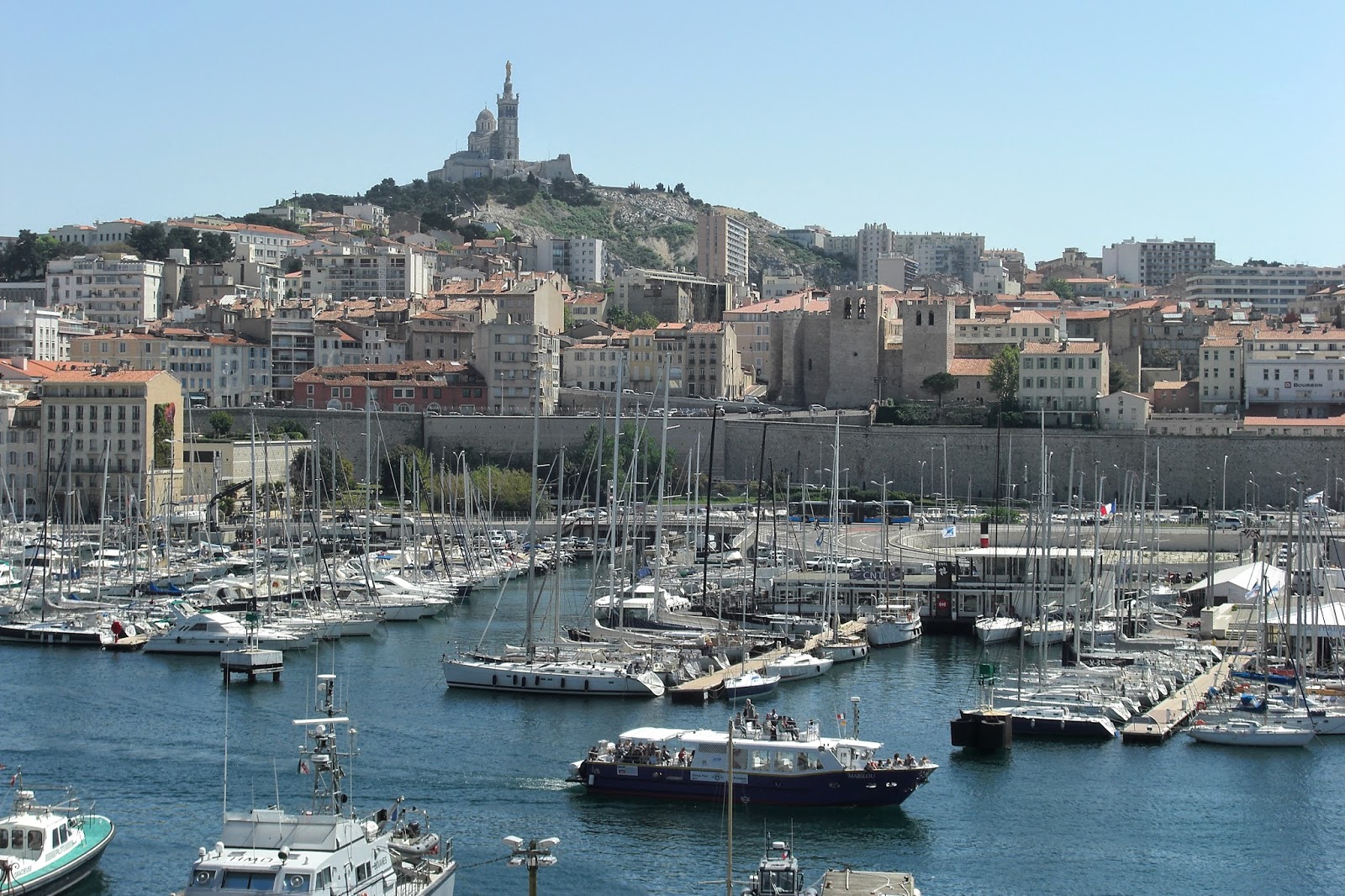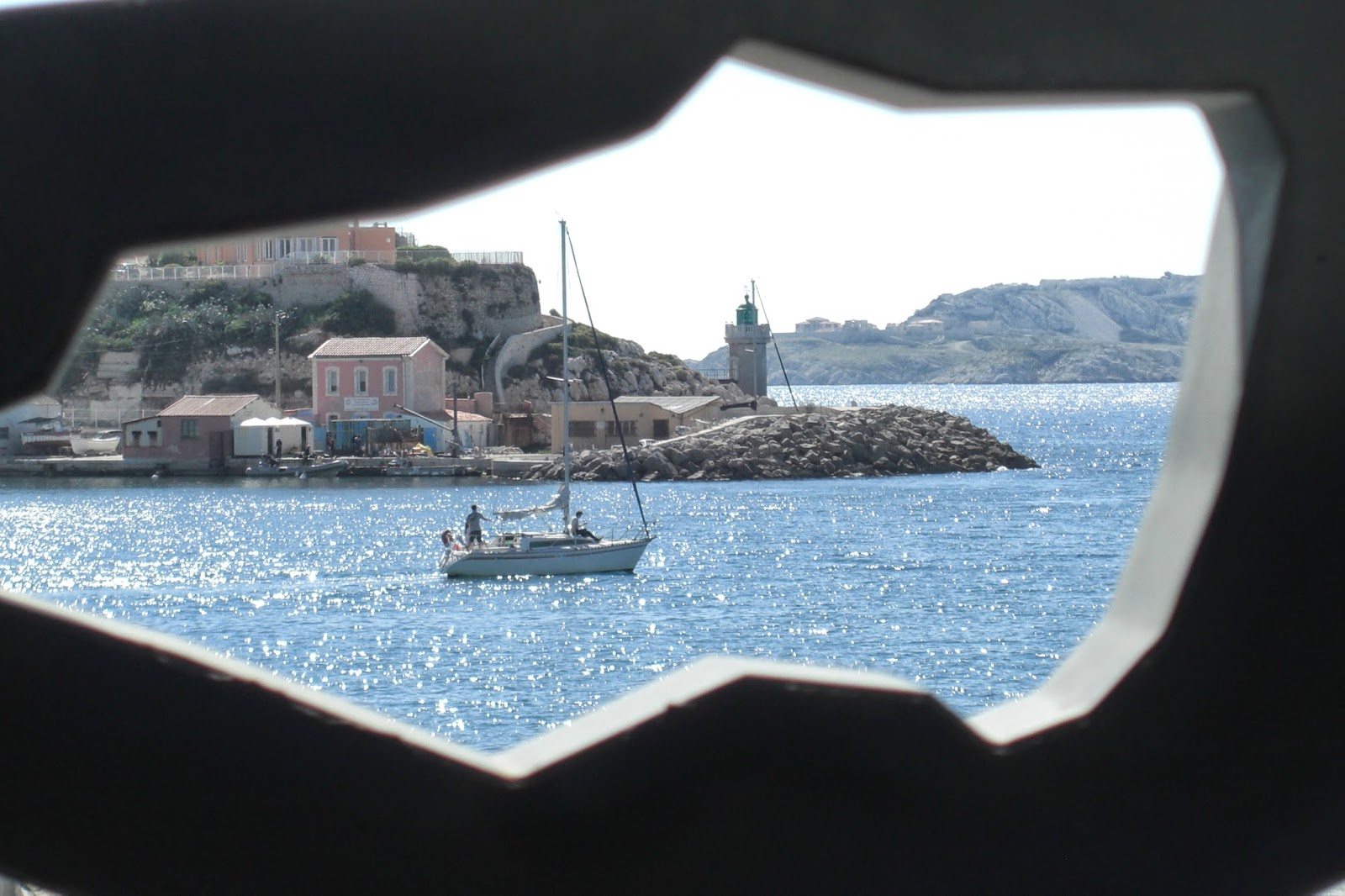 |
| The Vieux Port (Old Port) of Marseilles |
“Follow your nose,” said the lady, when asked for
directions to the Savonnerie de la Licorne (soap factory and shop). “You will
smell it before you see it.”
The Savonnerie, in the once gritty but now increasingly fashionable Cours Julien neighbourhood of Marseille, reflects the city’s past as a producer of fine soaps. But as the shop currently welcomes tourists from all over the world, and as its "graffiti-embellished" location turns trendy, the Savonnerie can be seen as a sign of how Marseille is changing.
The Savonnerie, in the once gritty but now increasingly fashionable Cours Julien neighbourhood of Marseille, reflects the city’s past as a producer of fine soaps. But as the shop currently welcomes tourists from all over the world, and as its "graffiti-embellished" location turns trendy, the Savonnerie can be seen as a sign of how Marseille is changing.
 |
| Soap in the city. |
This bustling southern French city has embarked on a wide-ranging restoration and beautification programme, and is transforming itself into a popular
destination for art-lovers, nature enthusiasts, gourmands and shoppers. Thousands
of tourists have in fact discovered Marseille since it was designated the European
Capital of Culture in 2013.
“That label was very important for us,” says Marion
Fabre, the press attaché for the city’s tourism office. “Because of this, we
were able to get support from the European Union to move ahead with many
projects.”
The projects included the opening of four impressive new museums and the renovation of several others, which helped to attract a record 5.5 million tourists in 2013, according to officials.
The projects included the opening of four impressive new museums and the renovation of several others, which helped to attract a record 5.5 million tourists in 2013, according to officials.
 |
| MuCEM |
In addition,
despite the city’s reputation for gang-related violence and other ills, some 1.15
million cruise-ship passengers passed through Marseille last year, up from 19,000
in 1995.
“People are realizing that Marseille is a good place
to do everything,” says Fabre. And the city really does have much to tempt visitors.
The most notable addition to Marseille’s cultural offerings is MuCEM, the Musée
des Civilisations d'Europe et Méditerranée (European and Mediterranean
Civilisations Museum) that opened last June.
Housed in an architecturally stunning building that’s
linked to the city’s restored Saint Jean Fort by an aerial walkway, MuCEM is
the first museum in the world entirely devoted to Mediterranean culture. The
aim is to enable visitors to “discover and better understand the societies in
which we live”, say the curators.
 |
| One of the views from MuCEM. |
Designed by Algerian-born architect Rudy Ricciotti,
the building capitalizes on its location above Marseille’s famous Vieux Port,
with museum-goers able to enjoy spectacular views of the sea and islands in the
distance. The exhibits might not be much to write home about, as you can see
similar items in many other museums, but the building itself will stay in one’s
memory.
On the other side of the Vieux Port, both the building
and displays are impressive at the Musée d'Histoire de Marseille (Marseille
History Museum), which reopened in 2013 with a modern new design, 30 years
after it was created. The museum is built around an archaeological site where
artefacts of the city’s history were discovered, testament to Marseille’s ancient Greek past.
Here, thematically organized objects, films, and interactive
video installations take visitors on a journey through 2,600 years of history,
showing the city’s timeless links with the Mediterranean Sea. The remains of huge
boats, painstakingly reassembled, are among the central items of the
collection.
 |
| The remains of an ancient boat. |
“Thanks to scientific research and documentation, all
these collections recount the lives of the men and women, famous or unknown,
who have been involved in the making of the city’s history,” says Laurent
Vedrine, the head curator.
The Musée d'Histoire is one of 20 museums now present
in Marseille, with some exhibiting modern or ancient art. The Vieille Charité,
a former almshouse that now houses several museums and a cultural centre, is
currently hosting an intriguing show titled “Visages” (Faces), with paintings
by 90 artists including Picasso, Magritte and Warhol, that runs until June 22.
If one gets tired of looking at exhibitions, however, one
can opt for gazing at nature’s own art – in the renowned Calanques National
Park, just outside the city.
Given protected status just two years ago, in May
2012, the Calanques form Europe’s largest National Park and is the first on the
continent to include a land, marine and suburban area, being the gateway to
Marseille with the city’s nearly one million inhabitants.
 |
| Part of the Calanques National Park. |
It took years of discussion and action for the 5000-hectare
locale to achieve its status, but now area residents and visitors can feel good knowing that the park will be preserved for future generations who will also be able to enjoy
the breath-taking landscape and biodiversity.
Birds, lizards and butterflies are some of the
creatures that one comes across while hiking through the limestone “wilderness”, and when one treks down to the sea,
one can spot turtles or, if lucky, unusual fish such as the Corb.
Marseille’s old urban areas are also being preserved
and upgraded. One of the biggest symbols of this is the huge mirror-ceiling by
English architect Norman Foster covering the pedestrian plaza at the top of the
Vieux Port.
 |
| A vendor sells Marseille soap at the Vieux Port. |
Around the Port, vendors in traditional
costumes sell Marseille’s most famous product - yes, the soap. And back at the
Cours Julien district, tourists can take a tour to see how it’s made.
“We mix vegetable oil with soda and add different
ingredients to make unique soaps that feel great on your skin,” says the
director of the Savonnerie de la Licorne, Serge Bruna, as he leads the way
through the shop and factory.
As workers cut and stamp the sweet-smelling products, Bruna explains to
visitors that the Marseille soap industry was created in the 16th century and that by 1786, there were 48 soap factories
employing 600 workers, with an annual production of 76,000 tons.
 |
| The soap is packed and ready to go. |
Manufacturing methods evolved during the 1800s,
producing sought-after soaps made with olive oil or palm oil. Nowadays, few active
soap factories remain in Marseille, but the city remains linked with the product,
and soaps can be bought in several specialty shops in the touristic areas.
Bruna’s artisanal products are aimed at the luxury market and sold in European countries,
China, Japan, the United States, as well as in Marseilles itself.
Indeed, as the Mediterranean city tries to scrub its
image, it seems as if the smell of vanilla-scented soap is everywhere. - L. McKenzie & J.M. De Clercq
 |
| From grafiitti to gentrification ... |
 |
| And natural beauty. |